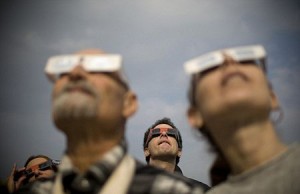 Technological developments in the area of photovoltaics are advancing daily. As a result, the cost of solar power is falling and new concepts are being developed for generating electricity in the future. Photovoltaics plays a major role at the world’s largest exhibition for the solar industry, Intersolar Europe in Munich. From June 8-10, 2011, around 2,000 companies will showcase the latest trends and developments in this field alone, with photovoltaics once again occupying a large part of the exhibition. Approximately 300 of these companies work in both photovoltaics and solar thermal technology. In an exhibition space covering 165,000 square meters, a total of 2,200 companies from around the world will present their products and services in the areas of photovoltaics, PV production technology and solar thermal technology.
Technological developments in the area of photovoltaics are advancing daily. As a result, the cost of solar power is falling and new concepts are being developed for generating electricity in the future. Photovoltaics plays a major role at the world’s largest exhibition for the solar industry, Intersolar Europe in Munich. From June 8-10, 2011, around 2,000 companies will showcase the latest trends and developments in this field alone, with photovoltaics once again occupying a large part of the exhibition. Approximately 300 of these companies work in both photovoltaics and solar thermal technology. In an exhibition space covering 165,000 square meters, a total of 2,200 companies from around the world will present their products and services in the areas of photovoltaics, PV production technology and solar thermal technology.
Faced with the environmental challenges that go hand in hand with supplying energy to an increasing global population, numerous incentive programs across the globe have emerged for developing renewable energy – most recently in India and China for example. At the same time, the German feed-in tariff is falling. Therefore, researchers and industry are working against the clock to achieve grid parity – the point at which electricity from photovoltaic installations can be sold at a competitive price.
Intersolar Europe not only focuses on technology itself, but also shines the spotlight on innovative applications and system solutions, such as those involved in using unconventional surfaces for photovoltaic installations. Alternative surfaces for photovoltaic installations – such as carport roofing – are currently taking center stage in the industry. Solar carports are a worthwhile alternative to conventional surfaces because no additional ground sealing is required and they offer huge potential. The largest installation of this type is located in Italy and is already boasting an output of six megawatts. The industry is currently developing multiple new ideas so that, in the future, the power generated from the carports may be used directly or indirectly for parked electric vehicles.

